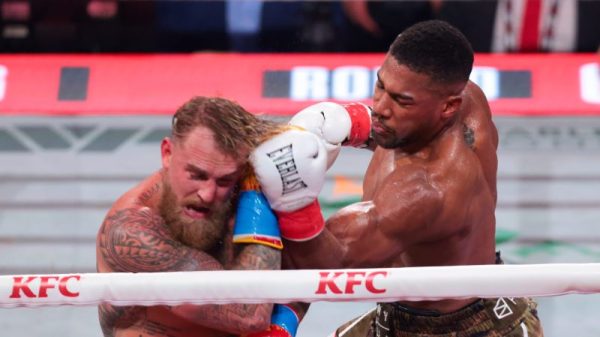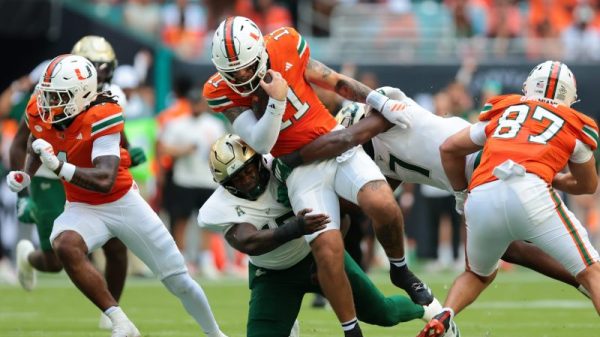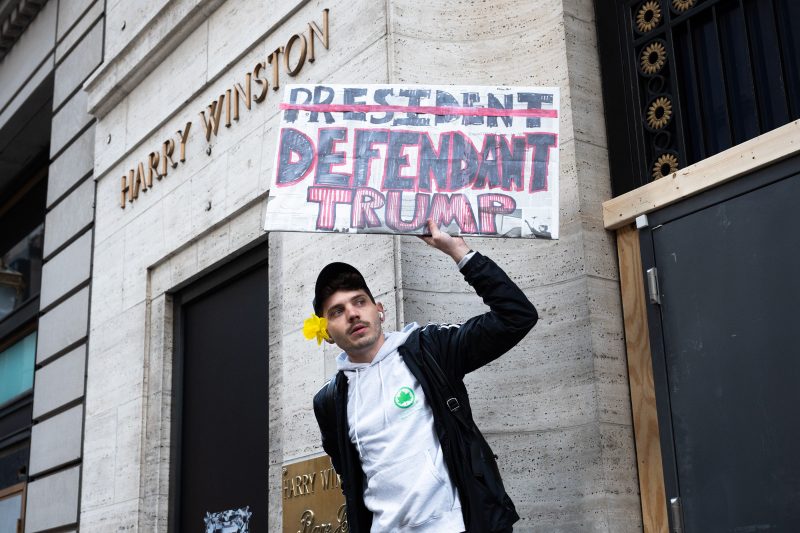Former president Donald Trump appeared in a courtroom in Lower Manhattan on Tuesday where he pleaded not guilty to 34 felony counts brought by a grand jury last week.
The appearance was the culmination of enormous speculation and media attention that followed him from his home in Mar-a-Lago to Trump Tower in New York and then to the courtroom. In the end, the new revelations that emerged from the release of the charges were incremental, but important. Below, five takeaways from the indictment and arraignment.
The indictment centers on the previously reported effort in 2016 to bury a story alleging an extramarital relationship between Trump and adult-film actress Stormy Daniels. That effort involved a payment of $130,000 to Daniels paid by Michael Cohen, then Trump’s attorney.
A statement of facts released by the office of Manhattan District Attorney Alvin Bragg details the prosecutors’ case. Cohen, it alleges, agreed in consultation with Trump and Trump Organization Chief Financial Officer Allen Weisselberg that the attorney should receive $420,000 in reimbursement, a sum including enough for Cohen to offset the increase in federal income tax he would need to pay.
According to the statement, this total was allegedly recorded on a bank statement (suggesting documentary evidence) and agreed to by Trump himself in an Oval Office meeting with Cohen. The sum was then repaid in a series of monthly checks that were allegedly recorded by the Trump Organization as being a monthly retainer for Cohen.
That’s where the 34 charges accrue. There were 11 payments, in each month from February 2017 to December 2017. Each payment was recorded on the check and in ledgers as a retainer payment, despite the alleged lack of a legitimate retainer agreement.
Falsification of business records in the second degree is a misdemeanor charge. If, however, the falsification is meant to cover up some other criminal act, it becomes a felony. That’s what Bragg’s office alleges happened.
It’s here that the details of the payments really matter. In its statement of facts, Bragg’s office outlines how Cohen and David Pecker, the former CEO of American Media, Inc. (AMI), allegedly worked with Trump to orchestrate payments to multiple parties. That included Daniels, former Playboy model Karen McDougal (who received a payment of $150,000 from AMI, the publisher of the National Enquirer) and a $30,000 payment from AMI to a Trump Tower doorman that was reported by the New Yorker in 2018.
In the abstract, a company like AMI paying McDougal or the doorman to bury their stories is legal. If they want to sell the rights to a private company, they may do so. But these payments, Bragg’s office alleges, violated the law and, therefore, warranted felony falsification charges.
Bragg explained the two predicates for that argument in a news conference on Tuesday afternoon.
“The first is New York state election law, which makes it a crime to conspire to promote a candidacy by unlawful means,” he said. “I further indicated a number of unlawful means, including additional false statements, including statements that were planned to be made to tax authorities. I also noted the federal election-law cap on contribution limits.”
The state charge, as The Washington Post wrote in January, appears to focus on a statute that makes it illegal to “conspire to promote or prevent the election of any person to a public office by unlawful means.”
The federal crime is less vague. If the payments were intended to keep negative stories from coming out before the 2016 election, then the payments were political spending. And if they were political spending from a candidate or an agent of the candidate’s campaign, they are subject to contribution limits and reporting requirements. These payments, obviously, weren’t reported. The legal question, then, centers on whether the payments were aimed at influencing the election.
The statement of facts gets at that. It notes that while Trump was never charged with either a state or federal crime, Cohen pleaded guilty to charges related to both the McDougal and Daniels payments. It also notes that AMI admitted to federal prosecutors that it participated in an effort to influence the election by making its payments.
That said, this is relatively novel terrain. Perhaps with that in mind, the documents make an effort to demonstrate why state or federal charges could have been filed.
Cohen had previously implicated Trump in the effort when he offered his guilty plea, but, since there were never charges filed against Trump, there was no evidence presented to prove that Trump knew that the intent was to boost his 2016 bid. One of the most telling aspects of the statement of facts — arguments that will need to be proved in court — is that it ties Trump into all of these.
For example, it was understood that Cohen (identified as “Lawyer A”) dragged his feet in paying Daniels (“Woman 2”) after her story was conveyed to Trump’s team by AMI. The document released Tuesday links that to Trump.
“The Defendant directed Lawyer A to delay making a payment to Woman 2 as long as possible,” it reads. “He instructed Lawyer A that if they could delay the payment until after the election, they could avoid paying altogether, because at that point it would not matter if the story became public.”
At another point, it references a conversation Trump and Cohen had about buying the McDougal story from AMI. That conversation was recorded and published in 2018 and made obvious that Trump’s electoral viability was a focus.
It’s been understood for some time that Pecker and AMI aimed to help Trump’s campaign. The statement of facts published on Tuesday begins in August 2015, the point at which Pecker reportedly first reached out to Trump and Cohen about his willingness to buy and bury negative stories.
Newly revealed in the court documents is an allegation that Trump acknowledged Pecker’s efforts.
“Between Election Day and Inauguration Day, during the period of the Defendant’s transition to his role as President, the Defendant met with the AMI CEO privately in Trump Tower in Manhattan,” the statement of facts alleges. “The Defendant thanked the AMI CEO for handling the stories of the Doorman and Woman 1, and invited the AMI CEO to the Inauguration. In the summer of 2017, the Defendant invited the AMI CEO to the White House for a dinner to thank him for his help during the campaign.”
This presumably came from Pecker himself, who testified before the grand jury that indicted Trump. It reinforces the idea that Trump understood the payments to be related to the campaign.
At the arraignment itself, lawyers and New York Supreme Court Justice Juan Merchan discussed Trump’s public rhetoric about the case, which has already included enthusiastic disparagement of the criminal charges and Bragg.
“Please refrain from making statements that are likely to incite violence or civil unrest …” Merchan said, “making comments that have potential to incite violence, create civil unrest or jeopardize the state or well-being of any individuals.”
No gag order was put in place but there is relevant precedent from Trump’s circle. In 2019, a federal judge barred Trump ally Roger Stone from social media after he posted incendiary attacks as he was facing trial.
This article originally stated that misdemeanor falsification charges are the norm. In fact, felony charges are not uncommon.



























